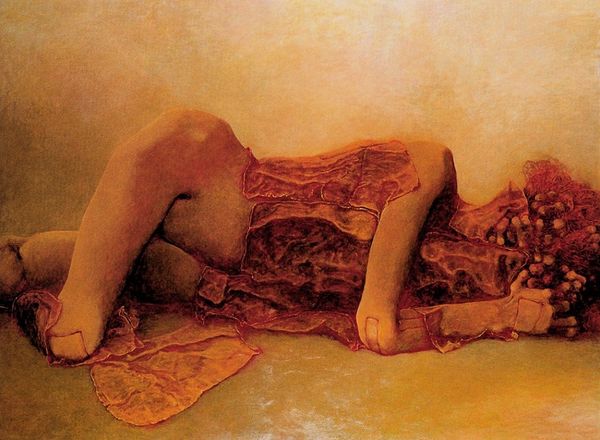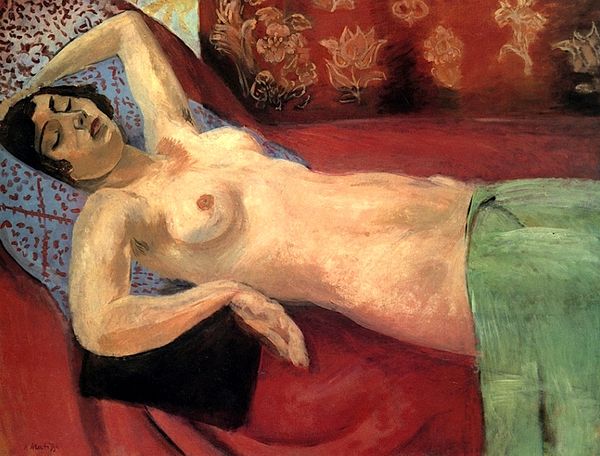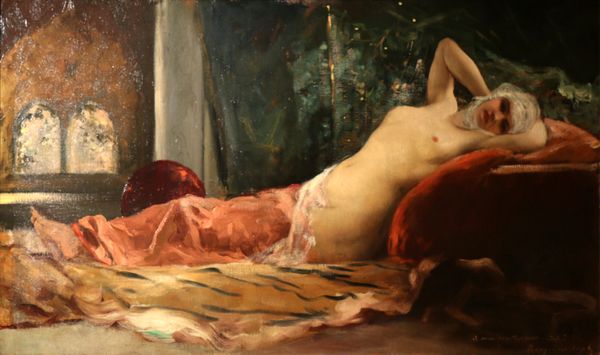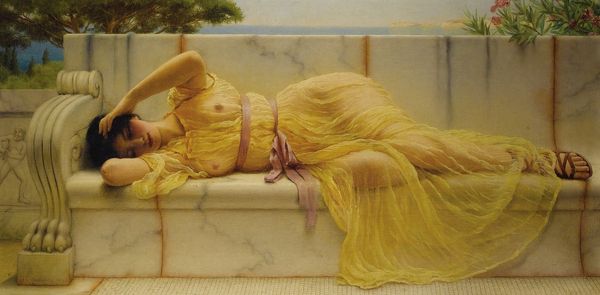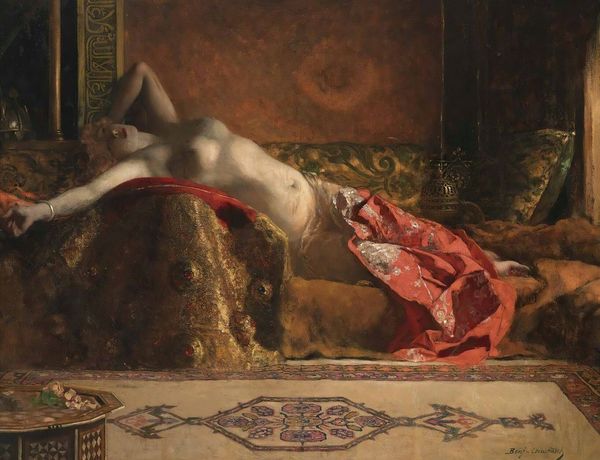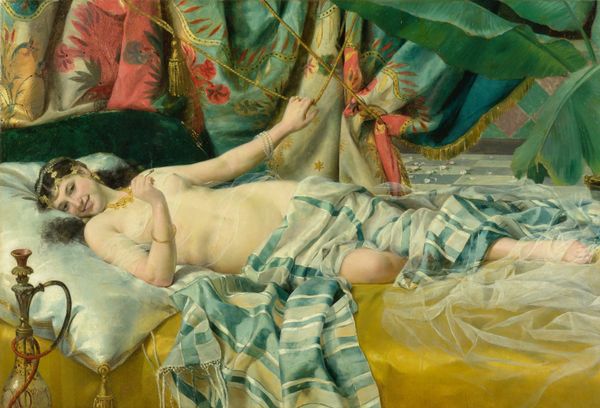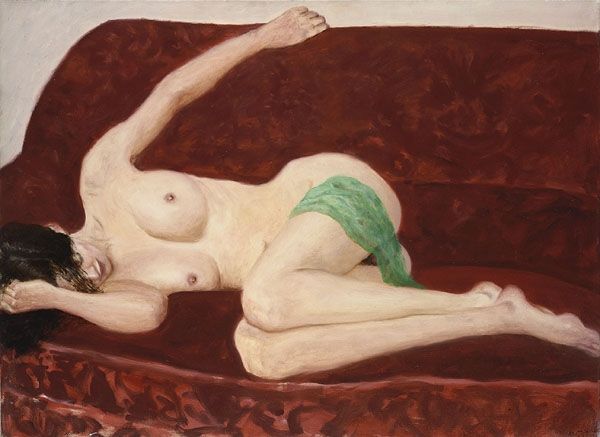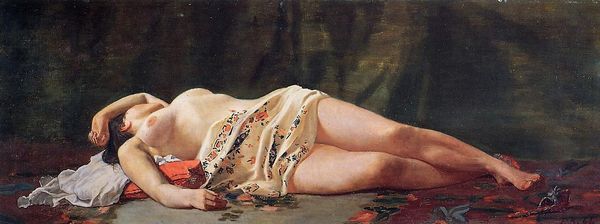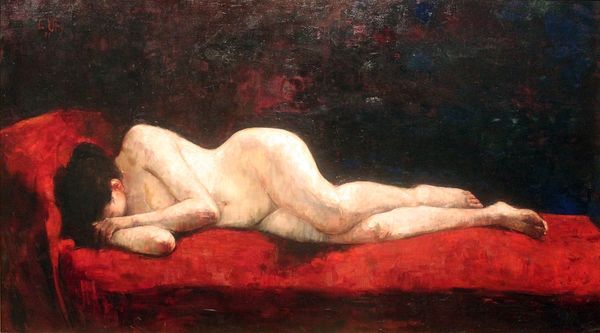
Copyright: Public Domain: Artvee
Curator: Let’s turn our attention to Theodoros Ralli's "Sleeping Concubine," painted in 1885. It's an oil painting, demonstrating the artist's clear mastery of light and form. Editor: My immediate impression is of languid opulence, a sort of decadent serenity. The woman reclines amidst rich colors and textures that scream Orientalism. The red curtain hanging in the background gives it a theatrical air as well. Curator: Indeed. Ralli, a Greek artist who spent much of his career in Paris, skillfully employs the conventions of Orientalism. Observe how the composition itself, with its deliberate arrangement of objects, serves to frame and present the figure. There’s a meticulous geometric organization underlying the apparent ease. Editor: Absolutely. The concubine motif in Western art often evokes the exotic other and male fantasy. The viewer is implicitly invited into a forbidden and private space, thus creating a charged atmosphere filled with subtle sexual suggestions. Curator: But, perhaps there’s also a commentary embedded here. Ralli's focus on the textures, the drapery, and the objects surrounding the figure suggest an equal, if not greater, interest in these elements. It becomes as much about the play of light and the arrangement of form as about the figure itself. Editor: The objects tell a story, or at least invite speculation: the musical instruments beside her might suggest an anticipation for play, and their presence reinforces the sense of leisure. The contrast between the luxurious fabric covering her lower body and the nudity on the top further speaks to her sexuality in this controlled environment. Curator: We can see a dynamic push-and-pull between sensuality and a sort of aesthetic detachment within the visual plane. Notice how the skin tones, especially in shadow, are rendered in almost sculptural relief. Editor: This brings forth questions about not only representation, but also reception. I'm also reminded how cultural memories about such pieces have shifted as postcolonial critiques reshape perceptions. Curator: Ultimately, "Sleeping Concubine" can be regarded as more than simply an Orientalist fantasy, as we peel back its representational layers to expose the visual strategies used. Editor: Right. It encourages reflection not only on what we see, but on the cultural lens we bring to that seeing, thus underscoring the ongoing impact and interpretation that this symbolic arrangement conveys.
Comments
No comments
Be the first to comment and join the conversation on the ultimate creative platform.
